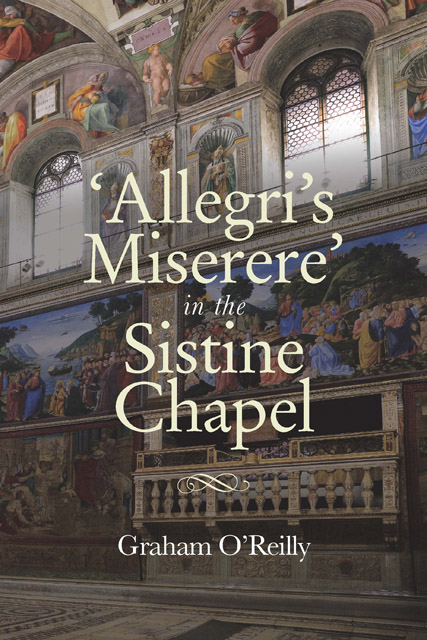Book contents
- Frontmatter
- Contents
- List of illustrations
- List of tables
- List of music examples
- Acknowledgments
- Note on the text
- Introduction: myth and reality
- Part One The Sixteenth and Seventeenth Centuries
- Part Two The Eighteenth Century
- Part Three The Nineteenth Century
- Part Four Performing the Miserere in the Twentieth Century
- Part Five Appendices, Editions and Notes
- List of appendices
- Bibliography
- Index
7 - ‘Con suoi rifiorimente, come si deve eseguire’ –What the earliest ornamented manuscripts show
Published online by Cambridge University Press: 13 January 2023
- Frontmatter
- Contents
- List of illustrations
- List of tables
- List of music examples
- Acknowledgments
- Note on the text
- Introduction: myth and reality
- Part One The Sixteenth and Seventeenth Centuries
- Part Two The Eighteenth Century
- Part Three The Nineteenth Century
- Part Four Performing the Miserere in the Twentieth Century
- Part Five Appendices, Editions and Notes
- List of appendices
- Bibliography
- Index
Summary
As in all falsobordone psalms, a large part of the choir’s interpretative work lay in the chanted sections, the rhythms of which are precisely given in all three of these manuscripts. The only other source to give such a level of detail is Domenico Mustafà’s retrospective manuscript of the Miserere di Bai ed Allegri of 1892 (CS 375) described in Chapter 12. That there is so much in common between them all is a measure of how slowly styles evolved in the Chapel. It has been noted above (Chapter 3) how important the ‘proportion of long and short syllables’ had been to the singers since at least 1600, but what is found in these manuscripts is much more complex – true choral recitative.
Given the level of ornamentation in nearly all the parts of both choirs, it is clear that this was music for soloists. In the ‘composed’ sections embellishments are added frequently, as well as liberal indications of appoggiature, particularly in the upper parts. Only the lowest voices in each choir have no ornaments at all apart from in the chanted text. With the exception of the famous descending phrase in verse 3 and both versions of the phrase for duetting sopranos at the end of it, the decorations are composed largely of simple turns, gruppetti, appoggiature and other graces, many of them consistent with those found in seventeenth-century sources such as Rognoni and Bovicelli. This not only accords with Mendelssohn’s description of the choir’s performances when he visited in 1831 – ‘little ornaments and trills such as were popular at the beginning of the last century’ – but is not incompatible with Zenobi’s instructions of 1600 (see p. 38) for singing ‘plainly’, using ‘grace, trillo, tremolo, ondeggiamento, and esclamatione’. The actual ornaments may have evolved (and some are difficult to express on paper), but the spirit of ‘rendering the notes with a certain neglect, sometimes so as to drag them, sometimes with sprightly motion’ is clearly shown. Most noticeably, the famous phrase with which the Miserere is now associated, which rises to the highest note in the soprano soloist’s part before gradually descending, is present in a form virtually identical to that in which it would be heard throughout the nineteenth century, as in Blainville’s version of 1767.
- Type
- Chapter
- Information
- Allegri's Miserere in the Sistine Chapel , pp. 111 - 118Publisher: Boydell & BrewerPrint publication year: 2020



